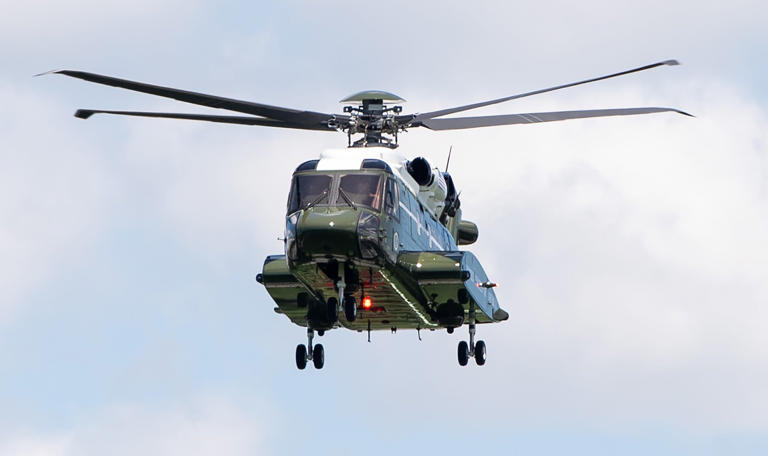The United States government’s investment of $5 billion into acquiring a fleet of new helicopters aimed at transporting the president stands as a testament to the importance placed on executive transportation and security. However, despite the considerable resources allocated to this endeavor, an unexpected and persistent challenge has emerged, casting a shadow over the otherwise promising initiative.
The Sikorsky-manufactured VH-92 Patriot helicopters, intended to serve as the flagship vehicles for presidential transportation, have encountered an unforeseen obstacle: their landing patterns have led to the scorching of the White House lawn. This issue, initially identified in 2018, has proven to be more than a mere inconvenience, as it has compelled authorities to curtail the use of these helicopters for carrying President Joe Biden, opting instead to transport White House officials or Secret Service personnel. Moreover, the restriction to landing exclusively on paved surfaces has added a layer of logistical complexity to the operation of these state-of-the-art aircraft.
This setback is particularly noteworthy considering the extensive planning and investment that went into the VH-92 program. With $5 billion allocated to the procurement of these helicopters, expectations were high for a seamless transition to a modern and efficient fleet for presidential transportation. However, the persistent issue of lawn damage has highlighted the need for comprehensive and effective solutions to ensure the full integration of the VH-92 into the executive-transport fleet.
The challenge of lawn scorching was not taken lightly, prompting concerted efforts to address the issue. Various modifications and adjustments were explored, reflecting a commitment to finding a resolution to the problem. Despite these efforts, the issue persists, underscoring the complexity of the task at hand.
In the interim, President Biden continues to be transported using older VH-3D Sea King helicopters, which, while reliable, lack the advanced features and capabilities of the VH-92. This underscores the urgency of resolving the lawn-scorching issue to fully leverage the potential of the new fleet and ensure optimal safety and efficiency in presidential transportation.
While progress has been made in certain areas, such as improvements in voice communications and operational effectiveness for administrative lift missions, the fundamental challenge of preventing lawn damage remains unresolved. Collaboration between stakeholders, including Sikorsky, the Naval Air Systems Command, and other relevant parties, continues in earnest to develop and validate landing zone solutions that meet the stringent requirements for presidential transportation.
Ultimately, the successful resolution of the lawn-scorching issue will be crucial not only for the seamless integration of the VH-92 fleet into presidential transportation operations but also for upholding the integrity and appearance of the iconic White House lawn. Until then, the transition to the new fleet will remain a work in progress, driven by a commitment to ensuring the safety, security, and efficiency of executive transportation.
